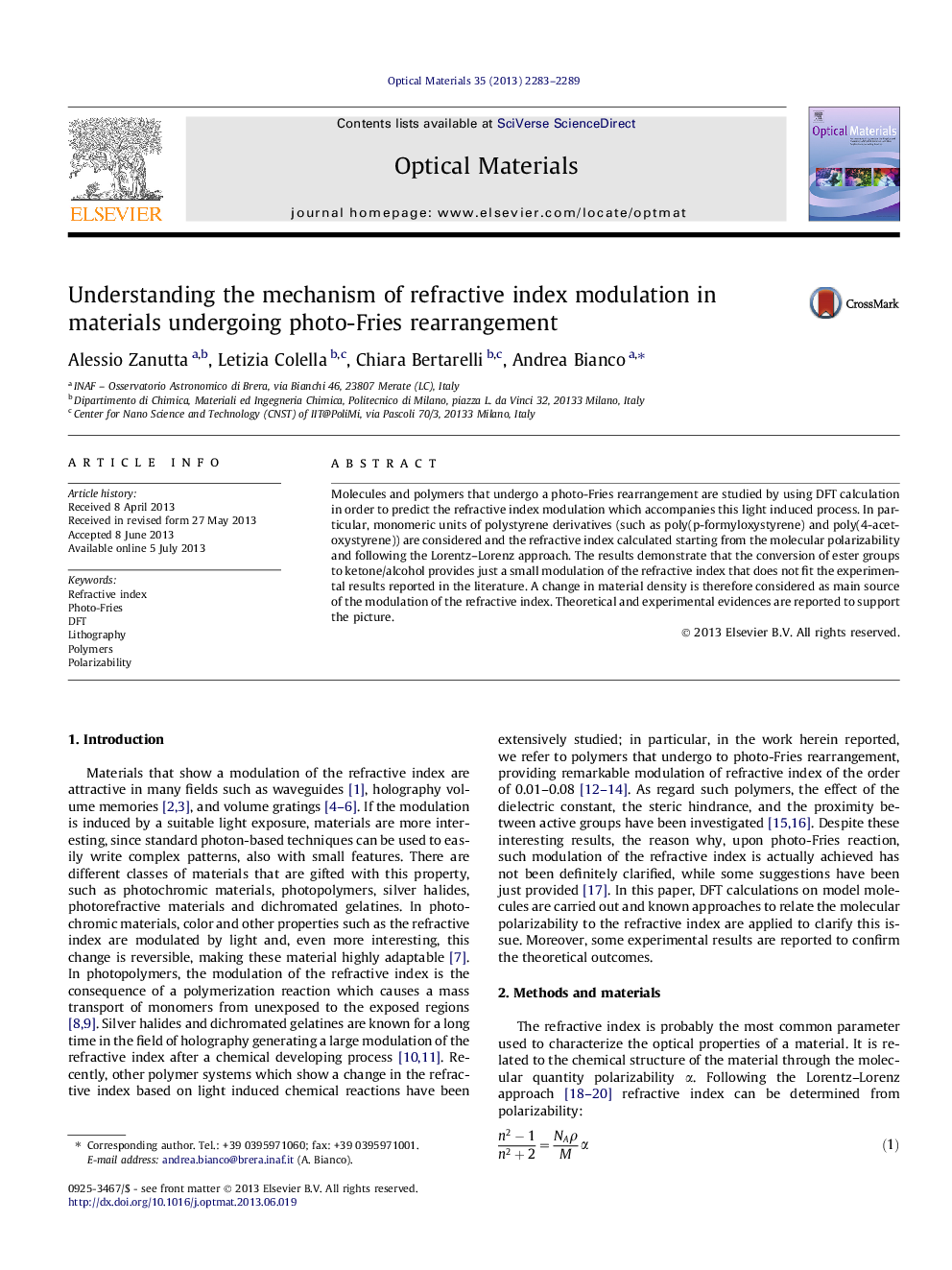| Article ID | Journal | Published Year | Pages | File Type |
|---|---|---|---|---|
| 1494905 | Optical Materials | 2013 | 7 Pages |
•Polymers undergoing to photo-Fries reaction are studied both theoretically and experimentally.•The reasons why such polymers show a large modulation of the refractive index are clarified.•A small modulation of polarizability is determined by DFT calculation: small effect on the refractive index.•A change in material density is predicted and experimentally founded that explain the large change in refractive index.
Molecules and polymers that undergo a photo-Fries rearrangement are studied by using DFT calculation in order to predict the refractive index modulation which accompanies this light induced process. In particular, monomeric units of polystyrene derivatives (such as poly(p-formyloxystyrene) and poly(4-acetoxystyrene)) are considered and the refractive index calculated starting from the molecular polarizability and following the Lorentz–Lorenz approach. The results demonstrate that the conversion of ester groups to ketone/alcohol provides just a small modulation of the refractive index that does not fit the experimental results reported in the literature. A change in material density is therefore considered as main source of the modulation of the refractive index. Theoretical and experimental evidences are reported to support the picture.
